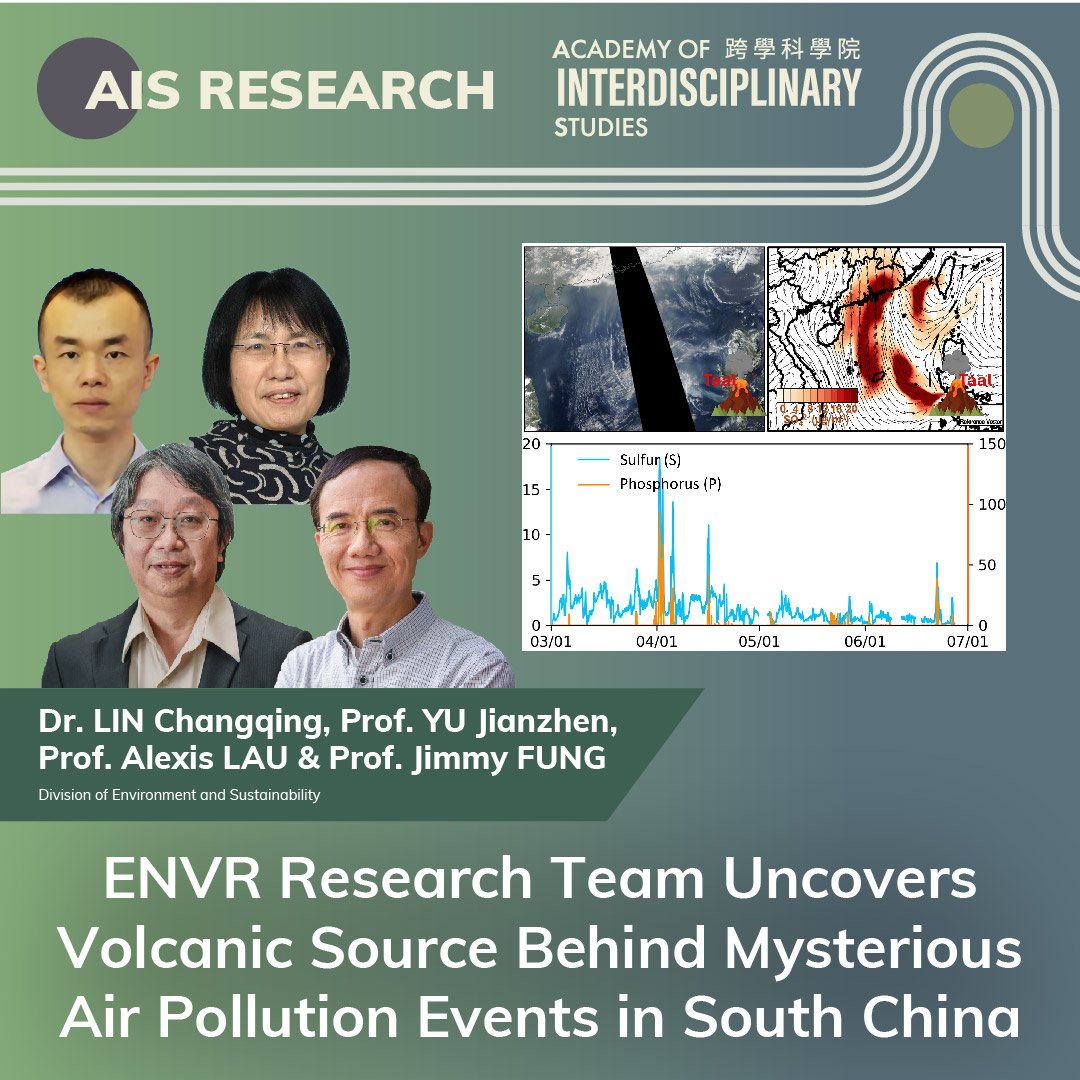A research team led by Dr. LIN Changqing, former Research Assistant Professor of the Division of Environment and Sustainability (ENVR), Prof. YU Jianzhen, Chair Professor of ENVR, and Prof. Alexis LAU, Head and Chair Professor of ENVR and Tang Junyuan Professor of Environmental Science, successfully traced mysterious air pollution events in South China to volcanic emissions from the Philippines, developing a novel tool for real-time detection of volcanic pollution. Published in Communications Earth & Environment, the study provides crucial insights for protecting public health through early detection of transboundary pollution events.
This research involves collaborative efforts from ENVR members, including Prof. Jimmy FUNG (Chair Professor), CHEN Yiang (Post-doctoral Fellow), CHEN Hanzhe (PhD Candidate in Atmospheric Environmental Science (AES)) and ZHANG Zijing (PhD Candidate in AES), together with contributions from the Hong Kong Observatory and the Hong Kong Environmental Protection Department.
The discovery stemmed from an unusual air pollution that struck Hong Kong on April 1-2, 2024, when visibility declined to 4.4 kilometers despite prevailing southerly winds that typically bring clean air to the region. PM2.5 levels surged beyond the 99th percentile of historical records, with the pollution spreading northward across Hong Kong and the Pearl River Delta region.
The research team traced the origin of pollution through multiple approaches: analyzing real-time chemical composition data and satellite measurements, while conducting air quality modeling with chemical transport simulations. Their investigation revealed that the Taal volcano in the Philippines was the source, with ground measurements in Hong Kong showing unusually high and synchronized levels of sulfate and phosphorus - typical markers of volcanic emissions.
Their comprehensive analyses of chemical and meteorological measurement data led to the development of a real-time chemical-wind index, incorporating sulfur, phosphorus, and wind measurements as a tool to identify air pollution events associated with volcanic emissions. Using this index, they successfully identified several additional air pollution events in 2024, conclusively attributing them to ongoing emissions from the Taal volcano.
This research exemplifies the immense value of integrating multi-scale real-time data capabilities. By promptly attributing the sources of sudden and unexpected air pollution events, such as volcanic eruptions and wildfires, authorities can implement timely measures to protect at-risk populations. The study also showcases ENVR's excellence in environmental science and dedication to solving global challenges through collaboration between institutions.





